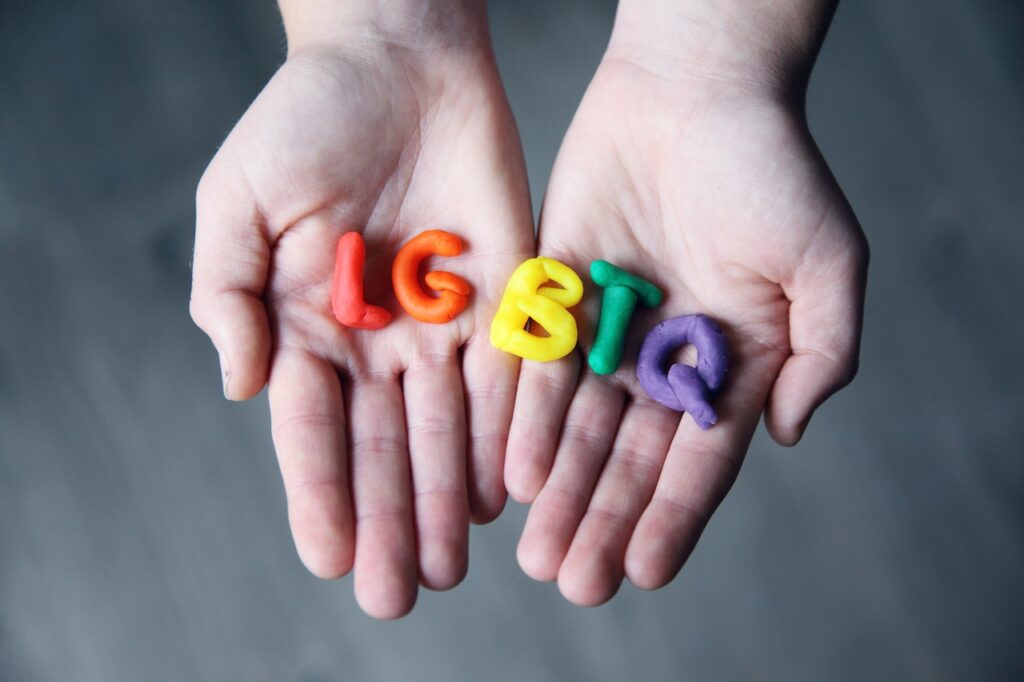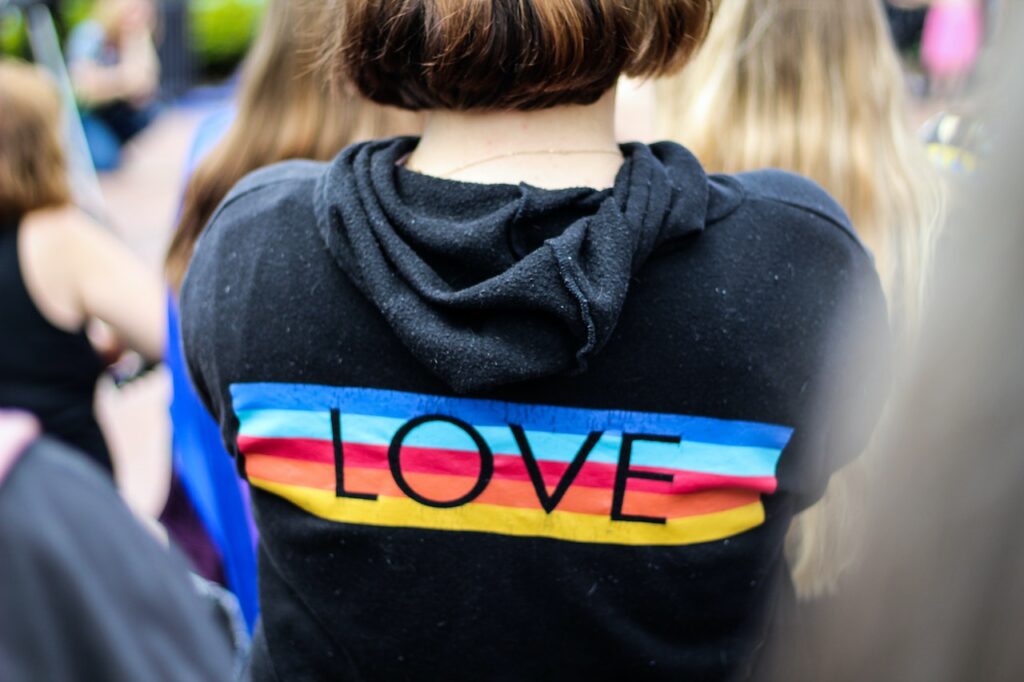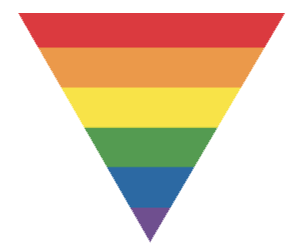Written by Sydney Maharaj-Nicholson
Let’s Talk About Gender
Gender is a socially constructed set of rules that people feel the need to follow based on a variety of factors. Everybody (yes, even you) has a gender identity (and a sexual orientation). A social construct is an idea that has been created and accepted by a society. Typically, our first experience of gender as a social construct being reinforced is before we are even born – the gender reveal party. This is wherein the misunderstanding lies – gender is not determined by the body parts we have, but the characteristics and rules that one will choose to follow. Some of us choose not to follow any of the “rules” set out by gender. This begins the exploration of gender identity.
“Gender refers to the characteristics of women, men, girls and boys that are socially constructed. This includes norms, behaviours and roles associated with being a woman, man, girl or boy, as well as relationships with each other. As a social construct, gender varies from society to society and can change over time.” – World Health Organization

The important piece of information from the definition of gender from WHO is that the characteristics of gender can change over time. I sit here and I see that the characteristics of gender already have changed; little boys are no longer told to “suck it up” when they feel their emotions, little girls are encouraged to climb and get dirty in the sandbox. We encourage our children to be authentic.
Children begin to recognize and label gender groups between ages 18-24 months. It is developmentally appropriate for children to explore and label their own gender by the age of 3. By age 6 and 7, children begin to recognize that gender is an identity separate from external features.
Representation and Curriculum Censorship
Representation matters. Positive media representation increases self-esteem, especially in youth. Interpersonal contact and exposure in lived experience and media representation can increase empathy, compassion, and understanding towards stigmatized groups. Despite this well-known information that is both empirically and socially supported, we are living in a world that is trying to erase trans, diverse gendered, and queer people. When we remove media representation and encourage curriculum censorship, we are serving to create a barrier for the development of gender and sexual identity in our youth. We are feeding systems of prejudice and oppression.
Similarly to the United States “Don’t Say Gay or Trans” laws that have surfaced, there has been traction to remove education on inclusivity and diversity from schools. Most recently, the “1 Million March 4 Children” has protested against the “SOGI Curriculum.” The SOGI (Sexual Orientation and Gender Identity) curriculum does not exist. SOGI 1 2 3 is a resource for parents and educators to expand the conversation of diversity and inclusion to include sexual orientation and gender identity, and since we all have a sexual orientation and gender identity, children are learning more about themselves and their peers.
You can review the resources here: https://www.sogieducation.org/parents
Imagine, you’re walking through life and there is a piece of you that feels unknown. This piece leaves you an outsider among your friends and family. I was 23 years old before I began questioning my sexual orientation and my gender identity. The grief and regret that showed up in my life, wishing I had realized sooner, could have saved me some pain and suffering. Learning about sexual orientation and gender identity will not brainwash children. It will give them all of the information they need to know who they are, and to show compassion and kindness to those who are different from them.
“This is like needing glasses. When I was a kid, I would get these headaches, and I went to the doctor and they said that I needed glasses. I didn’t understand that. It didn’t make sense to me because I could see fine. And then, I get the glasses, and I put them on, and I’m in the car on the way home, and suddenly, I yell, because the big green blobs I had been staring at my whole life, they weren’t big green blobs, they were leaves, on trees. I could see the leaves. And I didn’t even know I was missing the leaves. I didn’t even know that leaves existed. And then…leaves.”
Education, not unlike glasses, supports our perception of the beautiful differences between human beings.
“LGBTQ youth are not inherently prone to suicide risk because of their sexual orientation or gender identity but rather placed at higher risk because of how they are mistreated and stigmatized in society.” – The Trevor Project

Transitioning
There is a fear that educating children and youth about sexual orientation and gender identity will lead them to making irrevocable and dangerous health choices.
Let’s dig into the process of transitioning for youth. First, not all transgender and gender diverse children want to transition physically. For some, transitioning socially is enough to affirm their gender expression and identity. When transitioning socially isn’t enough, youth can explore medical options after they have participated in a comprehensive assessment to determine that transitioning is the safest and healthiest choice. Until age 18, transitioning is supported through gender-affirming care using medications such as puberty and hormone blockers. For example, the same medication used for children with precocious puberty (when a youth’s body is changing into an adult body too soon) can be used for youth who meet the criteria for transitioning. Youth of younger ages (youth who have begun puberty) are supported with reversible gender-affirming care.
Surgery for the purpose of transitioning will not be performed on anyone under the age of 18.
The Statistics
(Statistics taken from https://www.thetrevorproject.org/)
- LGBTQ youth who found their school to be LGBTQ-affirming reported lower rates of attempting suicide.
- 45% of LGBTQ youth contemplated suicide in the last year (2022).
- Fewer than 1 in 3 transgender and gender diverse youth found their home to be gender-affirming.
- 48-59% of transgender and gender diverse youth ages 13-24 seriously considered suicide in the past year, 12-22% made an attempt on their life.
Final Thoughts from Experts in the Field
“Although our data continue to show high rates of mental health and suicide risk among LGBTQ young people, it is crucial to note that these rates vary widely based on the way LGBTQ youth are treated.” – Dr. Myeshia Price (she/her or they/them), Senior Research Scientist, The Trevor Project
“Recent political attacks aimed at transgender and nonbinary youth have not only threatened their access to health care, support systems, and affirming spaces at school, they’ve also negatively impacted their mental health.” – Dr. Jonah DeChants (he/him), Research Scientist, The Trevor Project
“The fact that very simple things — like support from family and friends, seeing LGBTQ representation in media, and having your gender expression and pronouns respected — can have such a positive impact on the mental health of an LGBTQ young person is inspiring, and it should command more attention in conversations around suicide prevention and public debates around LGBTQ inclusion.” – Amit Paley (he/him), CEO & Executive Director, The Trevor Project
~Sydney

Resources
https://www.thetrevorproject.org/
Local Organizations and Resources for queer, transgender, and gender diverse folx
NG Pride – https://www.facebook.com/NorthGrenvillepride
North Grenville Rainbow Youth Alliance – https://www.facebook.com/profile.php?id=100087340514350
Queer Peer Support – https://ksrc.ca/community-involvement/
